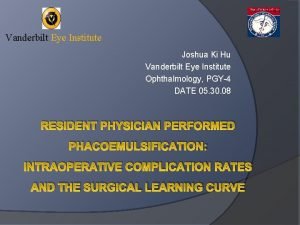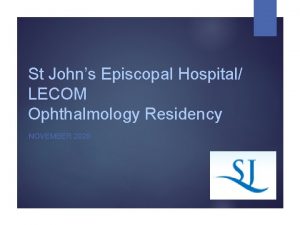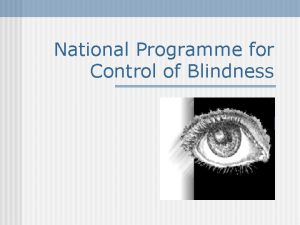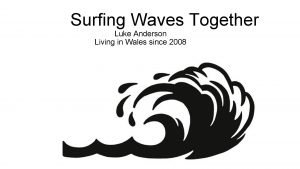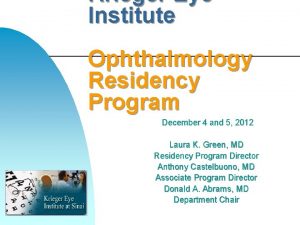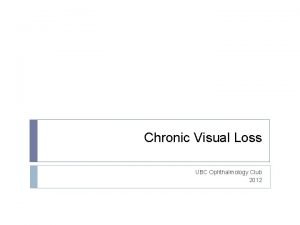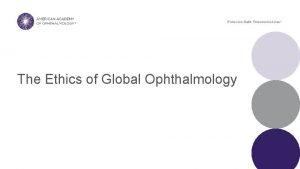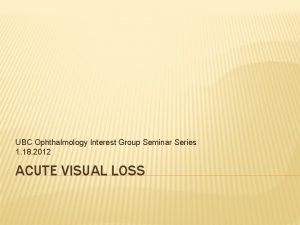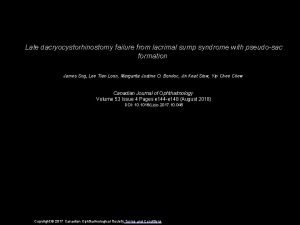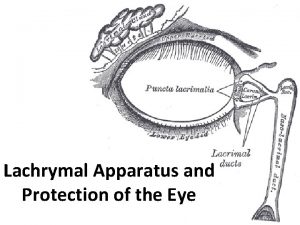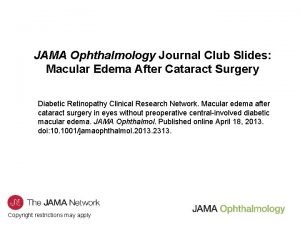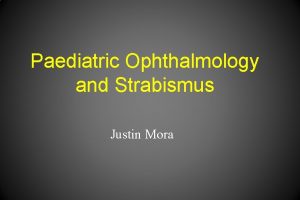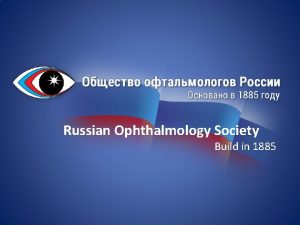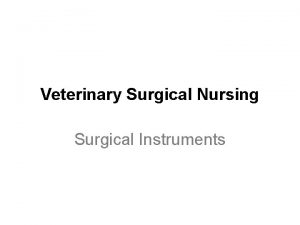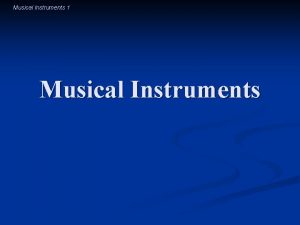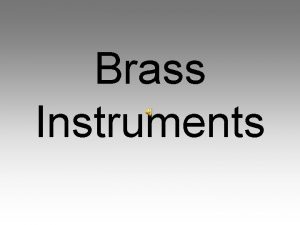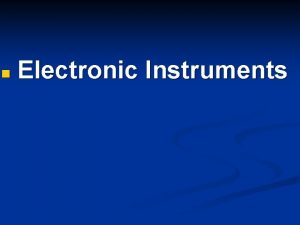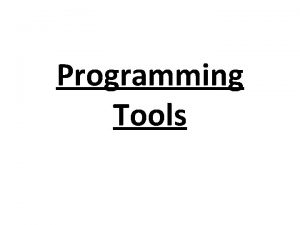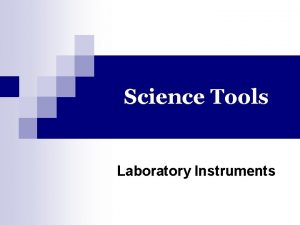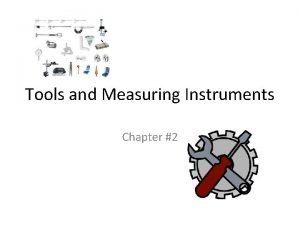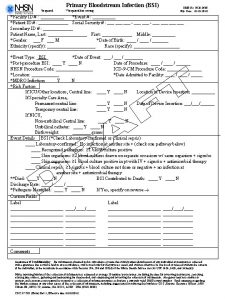INSTRUMENTS IN OPHTHALMOLOGY INTRODUCTION Instruments are tools required















- Slides: 15

INSTRUMENTS IN OPHTHALMOLOGY

INTRODUCTION • Instruments are tools required for examination in ophthalmology to arrive at a diagnosis. • Some are required to carry out procedures while others are necessary for treatment

TYPES OF INSTRUMENTS • Various types of instruments are used in ophthalmology. • These range from simple ones like the pen torch to sophisticated ones like the optical computer tomography (OCT).

TYPES OF INSTRUMENTS • A Snellen chart is an eye chart that can be used to measure visual acuity. Snellen charts are named after the Dutch ophthalmologist Herman Snellen who developed the chart in 1862

TYPES OF INSTRUMENTS • Pen torch: This is a very useful tool in the hand of any eyecare practitioner. It is used to assess the anterior segment of the eyeand ocular adnexa

TYPES OF INSTRUMENTS • Reflecting Mirror: The plain standing mirror is used in the eyeclinic to ingrease the distance from the Snellen’s chart in a room less than 6 metres

TYPES OF INSTRUMENTS • Trial lens set: The trial lens set is a box that contains the concave, convex, cylindrical and prism lenses. • It also contains occluders, pinholes and Jackson Cross cylinders • The contents of the box are used for refraction

TYPES OF INSTRUMENTS Direct Ophthalmoscopes: • The direct ophthalmoscope is commonly used for routine examination of the fundus of the eye, especially when a slit lamp cannot be used. • It is small, easily portable and can also be used to examine the more anterior parts of the eye.

TYPES OF INSTRUMENTS Indirect Ophthalmoscope: The indirect ophthalmoscope offers an alternative means of examining the retina and vitreous, and gives a very different view of the retina compared with that obtained with the direct ophthalmoscope. Both instruments have their place and should be used to complement each other during the clinical examination of the eye

Summary of the optical properties of the direct and indirect ophthalmoscope Image Field of view DIRECT INDIRECT Not Inverted Vertically and horizontally inverted Small (6°) Large (25°) Large ( × 15) Small ( × 3 [+20 D]) × 5 [+13 D]) Binocularity Not available Stereoscopic view Influence of patient's refractive error Large Small Magnification Teaching facility . None Teaching mirror

TYPES OF INSTRUMENTS • The Retinoscope: • An accurate objective measurement of the refractive state of an eye can be made using the retinoscope. The technique is called retinoscopy.

TYPES OF INSTRUMENTS • Slit Lamp: • The routine method of examining the outer segment of the eye is with a slit lamp. It consists essentially of a relatively low-powered binocular compound microscope which is linked to an adjustable bright light source. • The instrument is known as a slit lamp because in everyday use the illumination is arranged so that a narrow vertical slit of light is projected on to the eye.

TYPES OF INSTRUMENTS • Operating Microscope: This is used in theatre for microsurgical procedures

TYPES OF INSTRUMENTS • 90 D and 78 D Lenses : • The principle of the indirect ophthalmoscope has been adapted so that the real image of the retina formed by the condensing lens may be viewed through a slit lamp microscope. • For this purpose high power condensing lenses are used, 90 D or 78 D, in order to shorten the light path and bring the retinal image within the focal range of the slit lamp

• Visual Field Analyser: This is used in measuring the visual field in patients with glaucoma and other optic nerve damage
 Insidan region jh
Insidan region jh Vanderbilt ophthalmology residency
Vanderbilt ophthalmology residency Brittany denaro
Brittany denaro Dbcs in ophthalmology
Dbcs in ophthalmology Ophthalmology medical terminology
Ophthalmology medical terminology Mr luke anderson ophthalmology
Mr luke anderson ophthalmology Krieger eye institute residency
Krieger eye institute residency Ubc ophthalmology
Ubc ophthalmology Chapter 31 ophthalmology and otolaryngology
Chapter 31 ophthalmology and otolaryngology Ethics in global ophthalmology
Ethics in global ophthalmology Ophthalmology
Ophthalmology Ubc ophthalmology
Ubc ophthalmology Marek michalec
Marek michalec Sump syndrome ophthalmology
Sump syndrome ophthalmology Veterinary ophthalmology
Veterinary ophthalmology Jama ophthalmology impact factor
Jama ophthalmology impact factor

